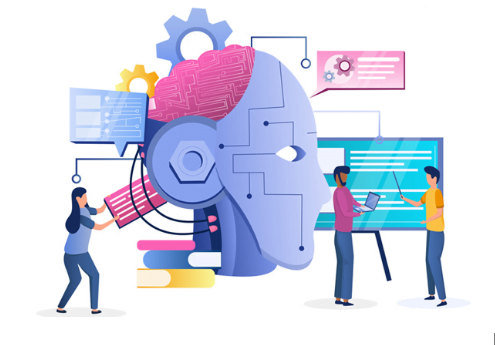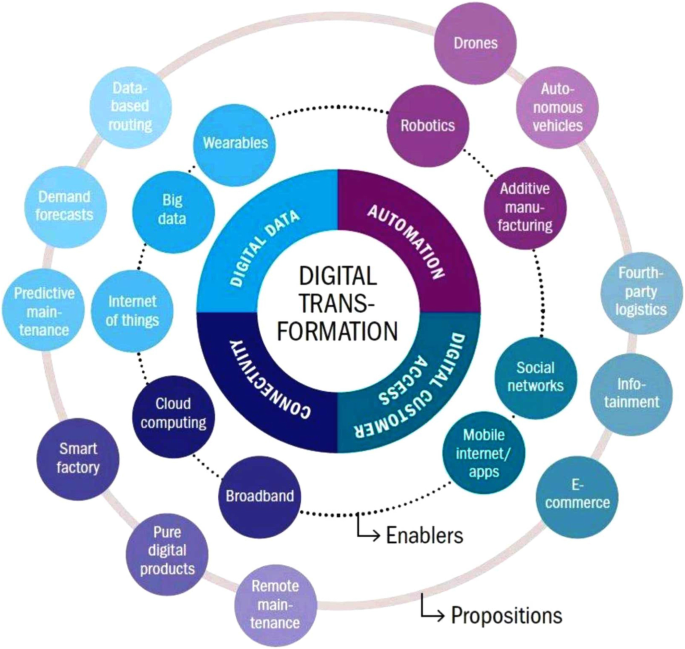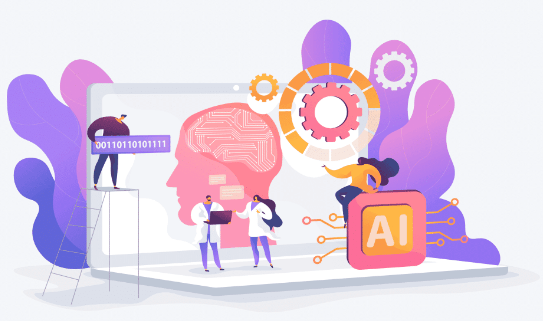How to Create A Smart AI Model for Digital Businesses Bunch of Reasons to Opt it
Artificial intelligence (AI) is the future of a technology-driven world. With each passing day, AI reveals its potential bright side in various domains. Meanwhile, technological giants such as Google, Microsoft, and Amazon deploy and implement intelligent methodologies across all aspects of their technology framework. Businesses can use AI models to streamline processes and drive growth.
- According to a recent McKinsey Global Survey, approximately one-third of companies are actively implementing generative AI in their organizations, with 60% of AI adopters using this technology.
- Furthermore, 40% of AI adopters intend to increase AI investment in response to generative AI, while 28% have it on their board’s agenda.
- According to the most recent Research and Markets report, AI is expected to grow at a compound annual rate of 52% by 2025, indicating rapid adoption by global businesses.

As Artificial Intelligence transforms businesses in finance, healthcare, retail, and beyond, it’s not just about staying afloat in a competitive sea but also about riding the waves with confidence. Finding the key reasons for creating intelligent AI models and digital businesses is critical for an enterprise to thrive.
How to Create A Smart AI Model for Digital Businesses:
Developing custom AI models can appear daunting, but breaking it down into smaller steps and taking a systematic approach makes it more manageable. Here’s a step-by-step guide to getting started developing your AI model: Orlando web design firms build websites that empower digital businesses.

Define the goals you want to achieve with your AI model.
Start by identifying the issues you want to solve using the AI model. Whether you’re improving operational efficiency, revenue, or customer satisfaction, clearly understanding your goals will help guide your AI initiatives effectively. Working with a dedicated AI Development company can help you achieve the best results by providing strategic guidance.
Data Gathering and Preparation.
The next step is to collect data and prepare datasets. Data powers your AI model and allows it to perform the tasks. You must test your AI model in real-world applications, so selecting relevant, high-quality datasets that accurately reflect those scenarios is critical. You can collect data from various sources, including your organization’s internal databases, third-party vendors, and IoT-enabled devices.

Choose the Correct Algorithm
Based on the nature of your challenge, choose the best deep-learning algorithm. CNNs excel at image-based tasks, RNNs excel at sequence-based functions like text and audio, and transformers can handle complex contextual relationships in data.
Design for model architecture.
The next step is to design the model’s architecture. This entails determining the number of layers, neurons, and connections in the neural network. The model’s architecture significantly impacts its performance. As a result, try out different configurations to see which works best.
Training, validation, and testing.
Divide your data into three subsets: training, validation, and testing. We use the training data to train the model’s parameters, allowing it to discover patterns and relationships in data. Then comes the test data. We use the testing data to evaluate the model’s accuracy and performance on previously unseen data.

Model Training.
Your AI app development team will now input the training data into the model and use backpropagation to change the internal parameters incrementally. In this stage, computational resources are required, and modern AI frameworks such as TensorFlow and PyTorch enable effective model training.
Hyperparameter Tuning
The AI model now requires fine-tuning hyper-parameters such as batch size and learning rate. Fine-tuning hyper-parameters is an important step for an AI model because it can strike the appropriate balance between over-fitting and under-fitting. This also ensures that the AI and Digital Businesses capabilities can generalize and respond to previously unseen data while avoiding training set memorization.
Model Assessment
The team then uses the validation dataset to evaluate the model’s performance. Measurements such as accuracy, precision, recall, and F1-score explain the model’s effectiveness. Using the evaluation findings, they refine the model iteratively.
Testing and Deployment
Testing is a crucial step in the development of any product. The development team evaluates and observes the model’s performance and effectiveness using a testing dataset resembling real-world scenarios. The model is ready for deployment if it meets all expectations and produces the desired results.
Continuous assessment and enhancement.
AI models must be evaluated and improved continuously to evolve with changing data trends. It is critical to actively monitor the model’s performance, collect user feedback, and make necessary changes to ensure accuracy and relevance.
Reasons to Create a Smart AI Model for Digital Businesses:
Several factors must be carefully considered to ensure success when developing business AI models. Several factors influence the AI model development lifecycle, ranging from data quality to ethical considerations. Enterprises should consider the following reasons while effectively navigating the complex landscape of AI and digital businesses:

Data Availability & Quality
Check the data availability and quality that will be used to train the AI model. Ensure the data is representative, accurate, and high-quality to achieve satisfactory and consistent performance.
Generative AI.
“Generative AI” refers to a branch of artificial intelligence technology that has gained popularity in the last five years. Certain models like ChatGPT can generate text, images, and code independently. Organizations can use generative AI to achieve new levels of creativity, efficiency, and distinctness in their offerings and operations.
Regulatory and ethical compliance.
Sensitive information is commonly found in enterprise data. Ensure that your development team implements strong data privacy and security safeguards to protect sensitive data while developing the enterprise AI model.
Scalability & Integration
When designing the AI model, consider scalability so that it can be expanded as data volumes increase. Ensure the enterprise’s current workflows and systems are compatible and integrate smoothly.

Transparent data handling
Addressing ethical issues such as bias, fairness, and transparency is part of transparent data handling. Implementing the right strategies can reduce bias in training data and decision-making and promote ethical and responsible usage of the AI model.
Conclusion
Developing a strong enterprise AI solution necessitates meticulous planning and flawless execution. At SoftCircles, we specialize in developing intelligent AI models focusing on data quality, clear objectives, and cutting-edge technology. By working with us as your AI development partner, you can create transformative AI solutions for your company that boost productivity, stimulate growth, and spark innovation.




Great keep it up, very good post